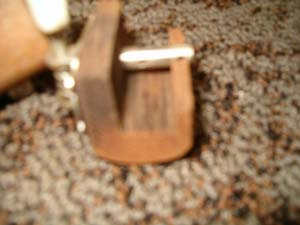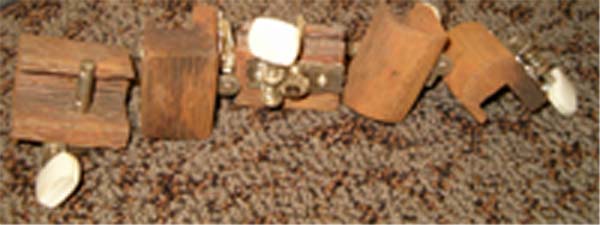Just for change of pace, here's a look at one of my upcoming projects: It's a Martin mandola picked up from an estate sale last weekend for $50. According to the serial number it dates to 1935. I know these aren't worth much, but that isn't always the point when I let one of these orphaned critters follow me home.

It has a spruce top and mahogany back and sides. The scale is 15? inches, a bit shorter than the contemporary mandolas I've seen. Judging from the scratches on the front and back, someone with a taste for fancy buttons owned it. My overall objective is to make this old beast sing again. I don't plan to do much of anything about the cosmetics except clean and polish it.
My first inspection reveals no problems with the braces, but there are some nasty side cracks on the treble side, upper bout. The cracks are tight, and there are four of them. They run most of the length of the upper bout. There's also a cross-grain crack between two of them. It's not quite all the way through, but you can see the fibers lifting along the edge of it on the inside. I imagine this is the point of impact for the event that caused the cracks in the first place.
I'm thinking of installing a thin mahogany side reinforcement brace below the cracks before I do anything else. After that I'm thinking of installing a pre-bent, very thin mahogany patch over the entire area behind the cracks. Is this too heavy handed? Or should I just glue the cracks and forget about it?
What would you do?
(I've posted a page with bigger pix here)





 I'd put a / between hide and fish! But as I haven't got one use your imagination OK.
I'd put a / between hide and fish! But as I haven't got one use your imagination OK.


